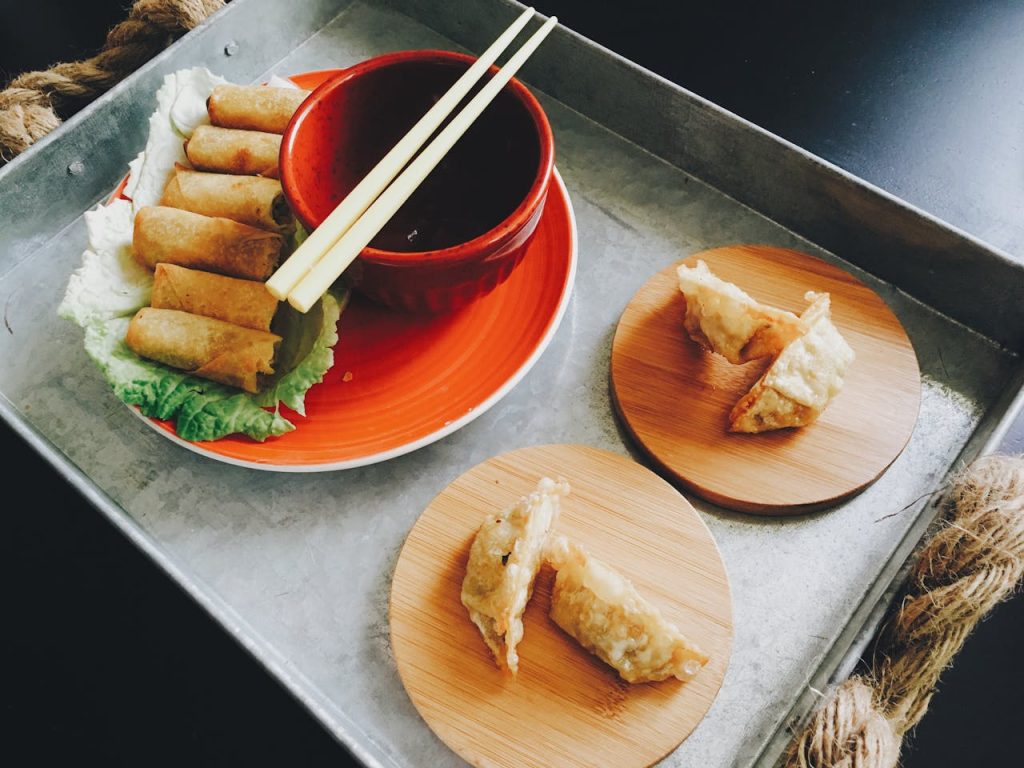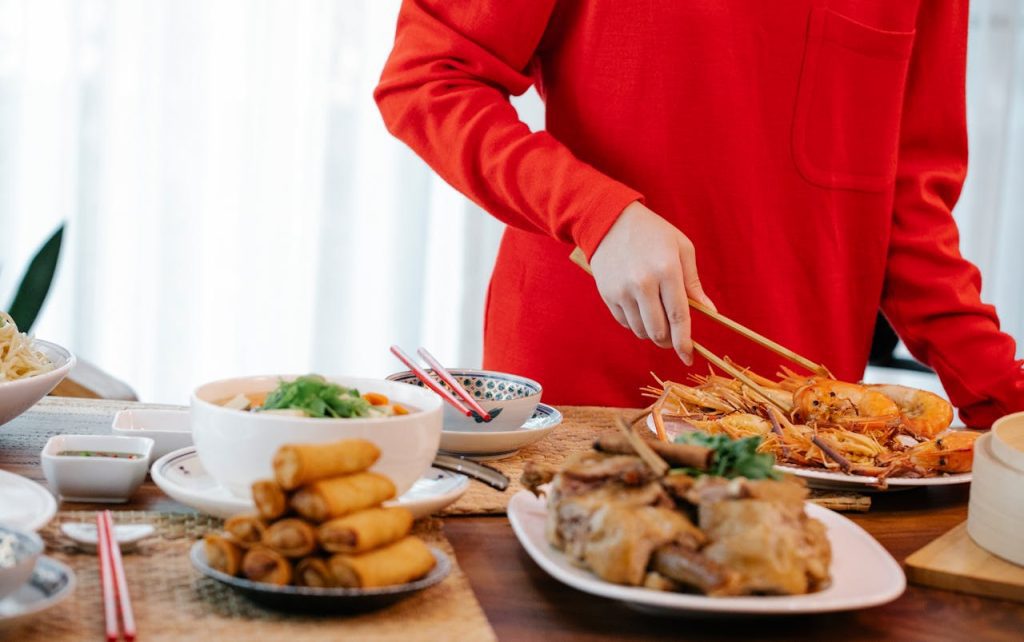Learn about Are Spring Rolls Suitable for a 10-Year-Old Child. Fried spring rolls are not healthy options to serve to kids. Fresh vegetable spring rolls stuffed with lean protein are a better choice.
Introduction
Spring rolls are widely known snack food, as they are nothing more than very thin wrappers filled with veggies, meat, or seafood. These rolls may be served fresh or fried, thus giving either a crunch or soft texture, according to the state of the rolls.
The spring roll, being an Asian product, traveled away from the East to every part of the globe, where each culture adopted its style with variations in ingredients and dipping sauces. Thus, tantalizingly versatile, it is an appetizer or a meal in itself.
Are Spring Rolls Suitable for a 10-Year-Old Child?
The spring roll can be eaten by a 10-year-old provided proper considerations are made in choosing the ingredients to be used. Big-fat frying oil might be healthier than thin spring rolls stuffed with vegetables or lean proteins. The fried ones are very oily and greasy. Chop them into small bits and watch for choking hazards, and check allergens before feeding.
Nutritional Value of Spring Rolls for Children
Fresh spring rolls are rice paper with ingredients that often vary, being wrapped with vegetables or shrimp or sometimes with one of those lean meat products. So it depends somehow to be healthy for a 110-year-old But in general, as far as cooking procedure is concerned, spring rolls could be a healthy snack for kids.
This food common nourishes with fibers, vitamins, and proteins. Fried spring rolls are greasy and calorie-rich snacks but do taste irresistible. They, however, may not be the best option to be had regularly.

Vegetable spring rolls are stuffed with carrots and cabbage, as well as bell peppers, which impart essential vitamins A and C for the child’s immune system and growth. Such protein sources as shrimp or chicken are used in muscle development, whereas rice paper and wrappers accomplish carbohydrate energy, required for more spring in a child’s steps.
Potential Health Concerns of Spring Rolls for a Child
The spring rolls may in themselves be healthy snacks or meals, but certain issues need to be taken into consideration when serving them to children:
1. High Sodium Content
Many commercially made or restaurant spring rolls may contain added sodium in the form of soy sauce dipping sauces or processed fillings. High sodium intake is good for no child, as it can bring complications later in life such as high blood pressure. Better to go with homemade spring rolls or those low in sodium.
2. Choking Hazards
Some ingredients may pose a risk of difficult chewing for children: hard and chewy shrimp lettuce, or thick wrappers. Cutting the rolls into smaller pieces will relieve the chance of choking, as will ensuring your child chews well.
3. Allergens and Food Sensitivities
Spring roll common allergens include shrimp, peanuts (mainly in the dipping sauce), and soy. Any child who suffers from serious food allergies needs to check the ingredients beforehand. Spring rolls made at home can allow parents to search for allergen-happy alternatives.
4. Oil Content in Fried Spring Rolls
Fried spring rolls might have higher saturated fats and calorie content than others due to the frying methods. An occasional treat is okay; however, regular eating of fried foods can make children gain weight and suffer from digestive discomfort. Non-fried fresh spring rolls are a worthwhile substitute.
Best Types of Spring Rolls for a 10-Year-Old Child
1. Fresh Vietnamese Spring Rolls (Gỏi Cuốn)
Fresh spring rolls, made of a soft rice paper filled with vegetables and lean proteins, along with vermicelli, include sprouts too. These are fresh, nutritious, and very easy to eat, which makes them healthy and appealing to child meals or snacks.
2. Baked Spring Rolls
When baked instead of deep-frying, it cuts down oils at the same time can make them crispy. Whole wheat paper makes fiber intake better; it is a healthier alternative. Lower fat levels but mouth-watering, crunchy rolls are birthed because of this option.
3. Vegetable Spring Rolls
The vibrant vegetables of carrots cabbage and even bell peppers bring much-needed vitamins and fiber to the table in these packed spring rolls. Great plant-based alternatives for kids, they promote safe healthy digestion and overall growth using natural wholesome ingredients.
4. Mini Spring Rolls
Smaller spring rolls tend to be better for children as they are more likely to manage to hold and put them into their mouths without any choking risk. Mini versions of them with very thin wrappers make an even smaller portion suitable for a fun, bite, and kid-friendly meal.
How to Make Spring Rolls Child-Friendly
Preparing spring rolls at home for your 10-year-old:
1. Use Soft Rice Paper or Thin Wrappers
Soft rice paper rolls are easier to chew than thick, crispy fried rolls. Don’t use too thick, hard wrappers that could be inconvenient to eat for a child.
2. Choose Healthy Fillings
Add lots and lots of colorful vegetables, cool proteins like chicken or tofu, and some mild seasoning. Stronger flavor profiles or ingredients that seem just a little bit too harsh for tiny taste buds should be completely avoided.
3. Cut into Smaller Pieces
Make it into small or mini-sized spring rolls so that they can be convenient as as possible for children to eat and less likely to choke on them.
4. Serve with Kid-Friendly Dips
Serve milder and healthier dipping options such as yogurt dips, honey-soy sauces, and mashed avocados instead of spicy or high-sodium types.

Potential Allergens and Sensitivities
These food allergens such as shrimp, peanuts as found in the dip sauces, soy sauce with its gluten, soy and wheat-based wrappers may be present for children who have food allergies or sensitivities with certain ingredients used in spring rolls.
For parents, if their children happen to be allergic to the above-mentioned ingredients, they should be mindful of such components. Homemade spring rolls can also be made to take control of all the ingredients and to avoid possible allergens.
FAQs
Can my child eat spring rolls with dipping sauce?
Yes, light and low-sodium sauces like peanut, hoisin, or light soy would be feelings of the actual sauces. Extremely spicy or high salt-content sauces also need to be avoided as these can be too overpowering on a child’s palate, leading to digestive discomfort!
Should I make homemade spring rolls for my child?
Absolutely! You can whip up fresh, healthy homemade spring rolls free from preservatives and allergens. Customizability is an asset with these rolls, so you can make them according to your child’s taste while still keeping them healthy and compliant with their dietary needs.
Can spring rolls be a meal for a child?
Spring rolls can be a balanced meal filling them up with proteins and veggies and nutritional sauces. Serve with fruits or soup to complete the meal for vitamins and minerals for the healthy growth of your child.
Conclusion
Baked or fresh vegetable- and lean-protein-filled spring rolls can make healthy snacks for 10-year-olds if made right. It is better to steer away from fried versions, allergens, and choking chunks. The soft homemade wrappers and mild dip options make spring rolls a safe, enjoyable dish for the little ones and a nutritional treat for the growing child.
